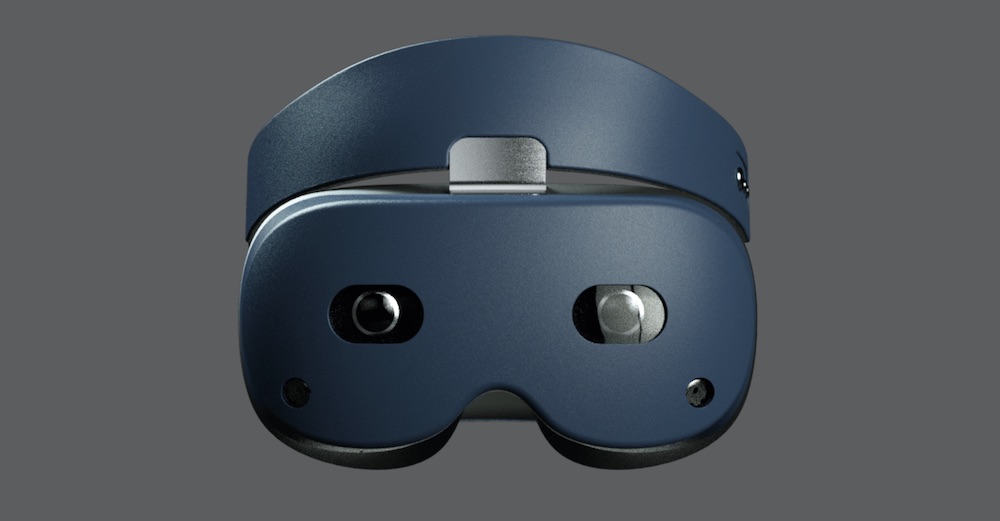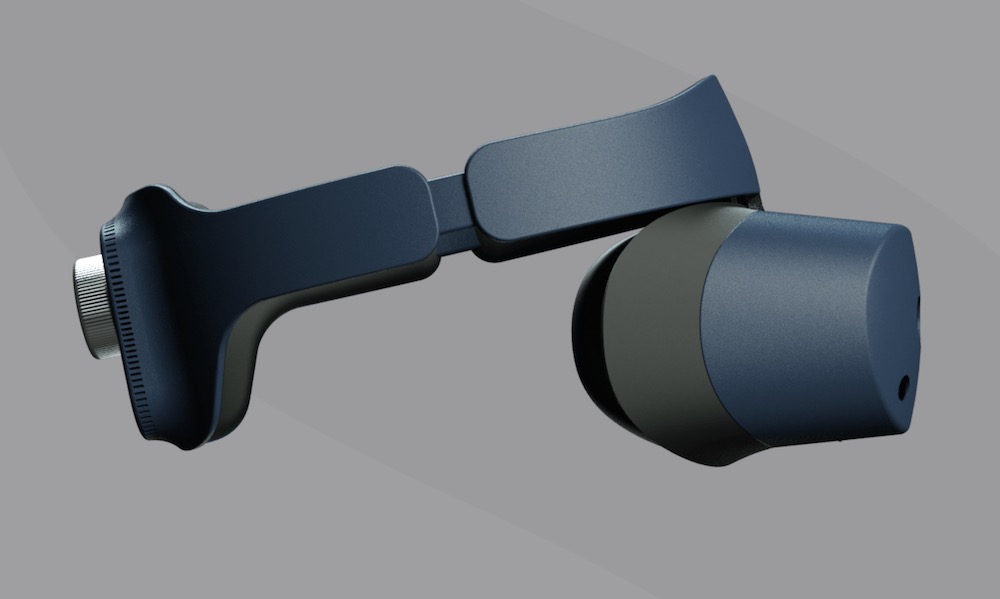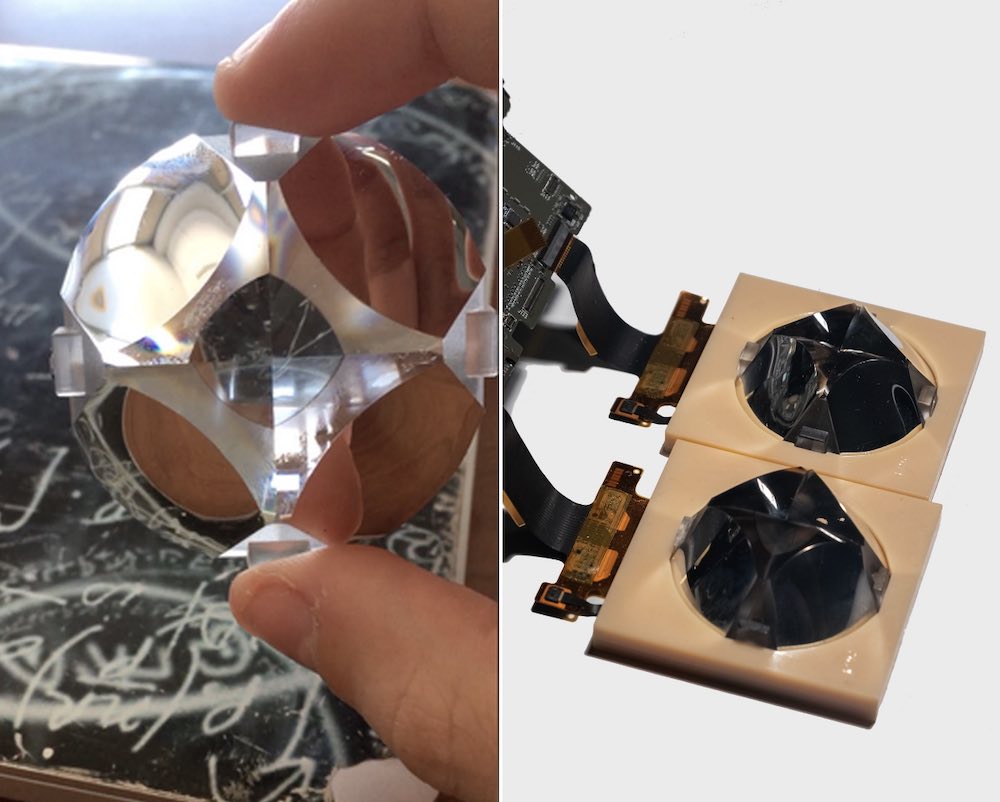Lynx-R1 Standalone Mixed Reality Headset Launched: Specs Revealed, Price is $1500
The Parisian startup LYNX has unveiled its standalone Mixed Reality headset Lynx-R1. This is the first six-degrees-of-freedom (6DoF) standalone passthrough video augmented reality headset and it comes with a price tag of $1,499. The headset targets “professionals”.

The Lynx-R1 is a unique device that combines the standalone feature of Oculus Quest with advanced transparency as well as mixed reality. It features two cameras that are embedded in the front part of the housing that capture the user’s surroundings and stream the images in real-time to the displays where these images can subsequently be expanded using digital elements. The Lynx-R1 supports both virtual reality and augmented reality simultaneously.
There are already standalone virtual reality headsets that feature positional tracking. These include devices such as the Vive Focus Plus and Oculus Quest. However, these devices aren’t designed for mixed reality operation. There are also fully-fledged mixed reality headsets such as the XTAL and the Varjo XR-1 but these are not standalone and require an external player to operate. This is where the Lynx-R1 provides an edge.

Passthrough AR
Augmented reality headsets are currently available in two main categories: the see-through and passthrough AR headsets. Most of the augmented reality headsets such as the Microsoft HoloLens 2 are see-through. The user is able to see the real world directly through the glass and the virtual objects are superimposed onto this glass. The see-through optics technology is still a fledgling one and is not well developed. The field of view is still very narrow and the virtual objects seen through the glass are not fully opaque.
The LYNX-R1 is a passthrough headset and it deploys the same display system that is used in virtual reality headsets but it displays the real world through the cameras instead of rendering an entire virtual world like in VR headsets. The real-world view is still not as good but the augmented reality rendering is able to cover a much wider field of view and there is also a full virtual object opacity at a much lower cost. It costs just $1,499 while the HoloLens 2 goes for $3,500.
It is a Fully Standalone Headset
Most of the other 6DoF passthrough mixed reality headsets such as the Varjo XR-1, XTAL and Vrvana Totem must be tethered to a PC in order to work. The LYNX-R1, like the Oculus Quest headset, is a standalone and wireless headset. All the computing hardware, storage and battery have been fitted onboard the headset.
Lynx-R1 is built with Qualcomm’s new Snapdragon XR-2 chipset which is the world’s first 5G-compatible chip and an XR variant of the Snapdragon 865. It is two times as powerful as the Snapdragon 835 chip in Oculus Quest. This chipset is paired with a RAM of 6GB and 128GB of onboard storage in the headset.
Other Specs
The Lynx-R1 also includes integrated two LCD displays that have a resolution of 1600 x 1600 and run on a 90Hz refresh rate. The lenses also feature a new design- a “4-fold catadioptric freeform prism” and provides a circular field of view of 90 degrees. These LCD panels deliver a much-improved sharpness than the PenTile OLED displays but the color is not as rich.

The mixed reality headset houses a total of six cameras: there are two black and white cameras for positional tracking, two RGB (color) cameras for the mixed reality mode and gesture recognition that are installed on the front part (These are for the passthrough as well as the computer vision applications like occlusion mapping and hand-tracking functionalities, including gesture control). There are also two eye-tracking cameras installed on the inside of the headset for eye detection.
The standalone mixed reality headset also features two built-in microphones and two built-in speakers that enable users to have positional audio and voice communications. It also supports Wi-Fi 6 along with Bluetooth 5.0 for wireless data exchange.
The headset is charged via a USB-C port. The Paris-based company has claimed that the battery can last up to two hours of active use when fully charged.
The case of the Lynx-R1 mixed reality headset can be folded at any time. The weight is still not known. The mixed reality headset does not include controllers but instead relies on optical hand tracking.
Target Group is Companies and Professional Users
The LYNX-R1 mixed reality headset is built for the enterprise market and targets both companies and professionals. It fills a gap in the market by providing a unique offering: a standalone passthrough mixed reality headset that has a relatively large field of view and costs an affordable $1,500. While video passthrough may be unappealing to mass consumers, it is ideal for professionals who don’t really mind whether they are viewing via a camera or glass.
At the moment, not much is known about the kind of operating system that it will run. The unveiling was livestreamed but without the audio.
You can pre-order the Lynx-R1 mixed reality headset via the company’s official website. Users who pay an extra $150 will be supplied itself. The company is will be making deliveries of the mixed reality glasses from summer 2020.
https://virtualrealitytimes.com/2020/02/04/lynx-r1-standalone-mixed-reality-headset-launched-specs-revealed-price-is-1500/https://virtualrealitytimes.com/wp-content/uploads/2020/02/Lynx-R1-Mixed-Reality-Headset-600x313.jpghttps://virtualrealitytimes.com/wp-content/uploads/2020/02/Lynx-R1-Mixed-Reality-Headset-150x90.jpgAR HeadsetsHardwareMixed RealityTechnologyThe Parisian startup LYNX has unveiled its standalone Mixed Reality headset Lynx-R1. This is the first six-degrees-of-freedom (6DoF) standalone passthrough video augmented reality headset and it comes with a price tag of $1,499. The headset targets “professionals”. The Lynx-R1 is a unique device that combines the standalone feature of Oculus...Sam OchanjiSam Ochanji[email protected]EditorVirtual Reality Times - Metaverse & VR
